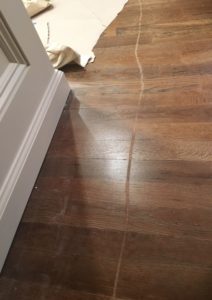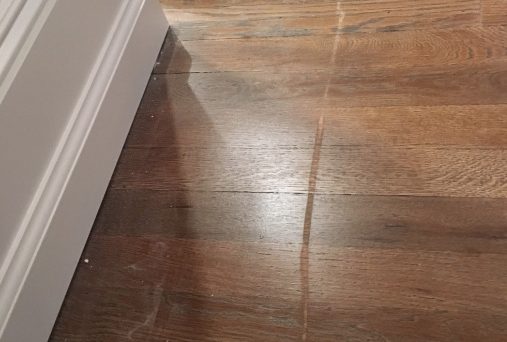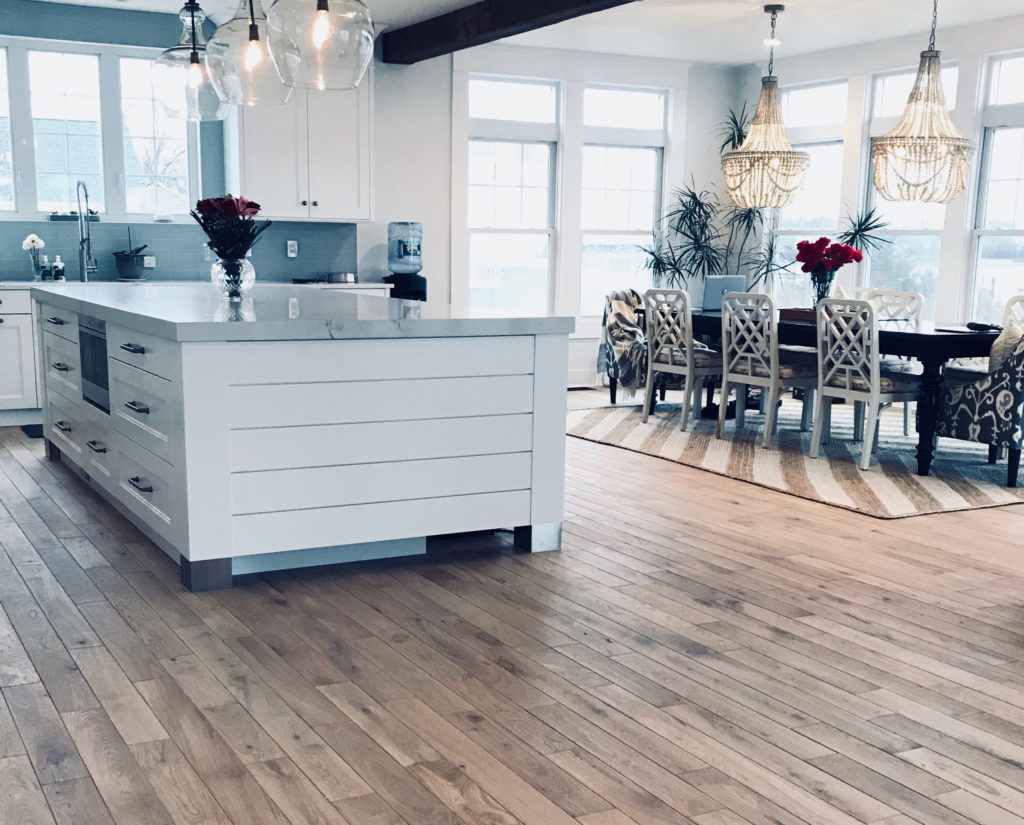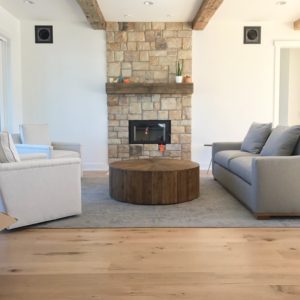Expert Floor Tips – Scratches
SCRATCHES OH’ NO…
We get so many phone calls from customers who scratched their floors from moving a couch, piece of furniture or an appliance. Save yourself a call to us by always protecting your floors. It’s more expensive than you think!
KITCHEN…If you are having a kitchen appliance repaired in your home it is best to ensure your hardwood floors are properly protected before any appliances are moved. Whether it is you or a service company moving, always put a protective barrier on the floor & underneath where the refrigerator or dishwasher will get dragged out. This will ensure minimal floor damage.
 Here is a photo example of a NJ homeowner who called Ron The Floor Guy to get a scratch repaired. Their refrigerator was dragged across the hardwood floor without protection. These type of scratches are costly to repair because they are deep and need to be completely re-sanded vs. a quick buff & coat service. Try to save money, time and the hassle of having to have an entire room re-sanded by protecting your hardwood floors whenever you have an appliance issue in your home.
Here is a photo example of a NJ homeowner who called Ron The Floor Guy to get a scratch repaired. Their refrigerator was dragged across the hardwood floor without protection. These type of scratches are costly to repair because they are deep and need to be completely re-sanded vs. a quick buff & coat service. Try to save money, time and the hassle of having to have an entire room re-sanded by protecting your hardwood floors whenever you have an appliance issue in your home.
FURNITURE…Thinking of redecorating or need to clean behind your couch? To ensure that you do not scratch your floors our best advice is as follows:
- Never drag your furniture when moving it
- Alway lift it up
- Place protective barrier under the legs if furniture is going to be dragged.
- Felt pads should be placed under all the legs of furniture including kitchen tables for future protection.
If you didn’t get a chance to read this article in time and need a scratch repaired, click here for a complimentary estimate.



